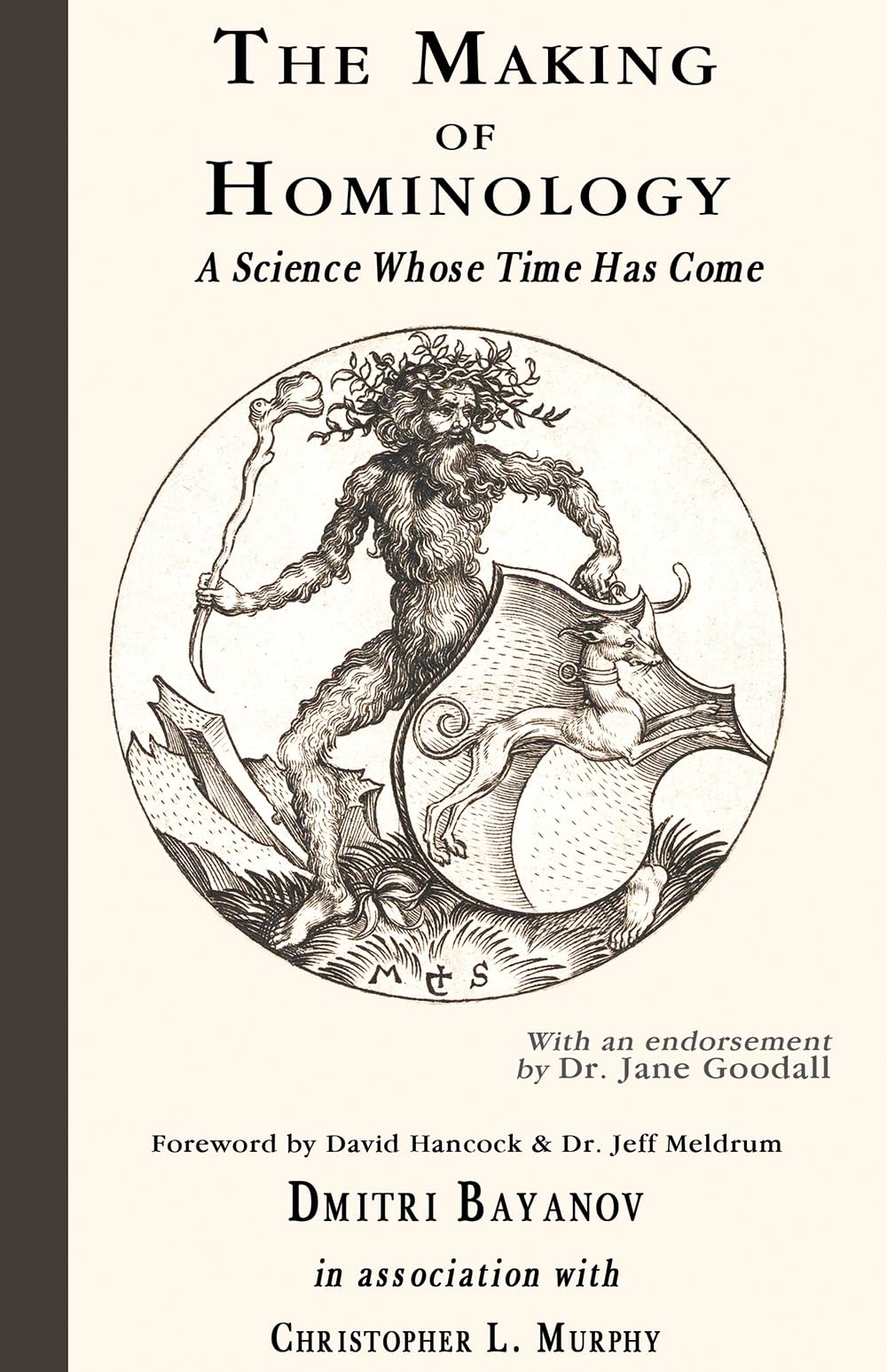The Making of Hominology is a detailed work aimed at moving the study of relict hominoids from the fringes of science to a fully recognized scientific discipline—The Science of Hominology. The main author, Dmitri Bayanov (born 1932), worked directly with Professor Boris Porshnev and other early Russian scientists investigating the possible existence of Relict Hominoids. Bayanov’s long journey began in the early 1960s and has continued until this day. This book covers the subject from the dawn of written communications in Europe and Asia, and then in North America. Dmitri Bayanov coined the term “Hominology” and from the outset has sought to convince the general scientific community that there is enough evidence to support his recommendation. His “arguments” reflect his significant understanding of the subject and depth of his studies. What he presents is truly convincing. From a scientific standpoint, this book is the most important work on Hominology ever written. It is both fascinating and highly educational with a special illustrated section on what we know about North America’s hominoid—the sasquatch or bigfoot. "Dmitri Bayanov has proposed a new scientific discipline?hominology?that will study the many reports of hairy upright non-human hominoids from various quarters of the globe. Beginning in the 1960s, Bayanov worked directly with Professor Boris Porshnev and other Russian scientists investigating reports of relict hominoids, such as the almasty, described as a possibly extant Neanderthal. Continuing that work, Bayanov has authored several books and published papers arguing convincingly that the accumulating evidence for these species warrants a move from the realm of myth and cryptozoology to serious scientific investigation. A lifetime of scholarly examination of this question, with evidence spanning from the dawn of written communications to the present, has culminated in this important book ? The Making of Hominology". Dr. Jane Goodall, Founder- the Jane Goodall Institute The Making of Hominology is a detailed work aimed at moving the study of relict hominoids from the fringes of science to a fully recognized scientific discipline—The Science of Hominology. The main author, Dmitri Bayanov (born 1932), worked directly with Professor Boris Porshnev and other early Russian scientists investigating the possible existence of Relict Hominoids. Bayanov’s long journey began in the early 1960s and has continued until this day. This book, covers the subject from the dawn of written communications in Europe and Asia, and then in North America. Dmitri Bayanov coined the term “Hominology” and from the outset has sought to convince the general scientific community that there is enough evidence to support his recommendation. His “arguments” reflect his significant understanding of the subject and depth of his studies. What he presents is truly convincing. From a scientific standpoint, this book is the most important work on Hominology ever written. It is both fascinating and highly educational with a special illustrated section on what we know about North America’s hominoid—the sasquatch or bigfoot. Christopher L. Murphy retired in 1994 after 36 years of service with the British Columbia Telephone Company (now Telus). During his career, he authored four books on business processes. After retirement he taught a night school course on vendor quality management at the B.C. Institute of Technology. An avid philatelist, Chris has written several books on Masonic Philately. Chris got involved in the sasquatch mystery when he met Rene Dahinden, who lived nearby, in 1993. He then worked with Rene in producing posters from the Patterson/Gimlin film and marketing sasquatch footprint casts. In 1996, Chris republished Roger Patterson's 1966 book, Do Abominable Snowmen of America Really Exist?, and Fred Beck's book, I Fought the Apemen of Mt. St. Helens. In 1997, Chris published Bigfoot in Ohio: Encounters with the Grassman, a book he authored in association with Joedy Cook and George Clappison of Ohio. In 2000, Chris embarked on a project to assemble a comprehensive pictorial presentation on the sasquatch. This initiative led to his 2004 sasquatch exhibit at the Vancouver (BC) Museum and the publication of Meet the Sasquatch, the first edition of this book. In due course, Chris wrote a supplemental section to Roger Patterson's book, which was republished in 2005 by Hancock House Publishers under the title, The Bigfoot Film Controversy. The following year, Chris updated his Ohio book, again with his two previous associates, and it was published in 2006 by Hancock House under the t













